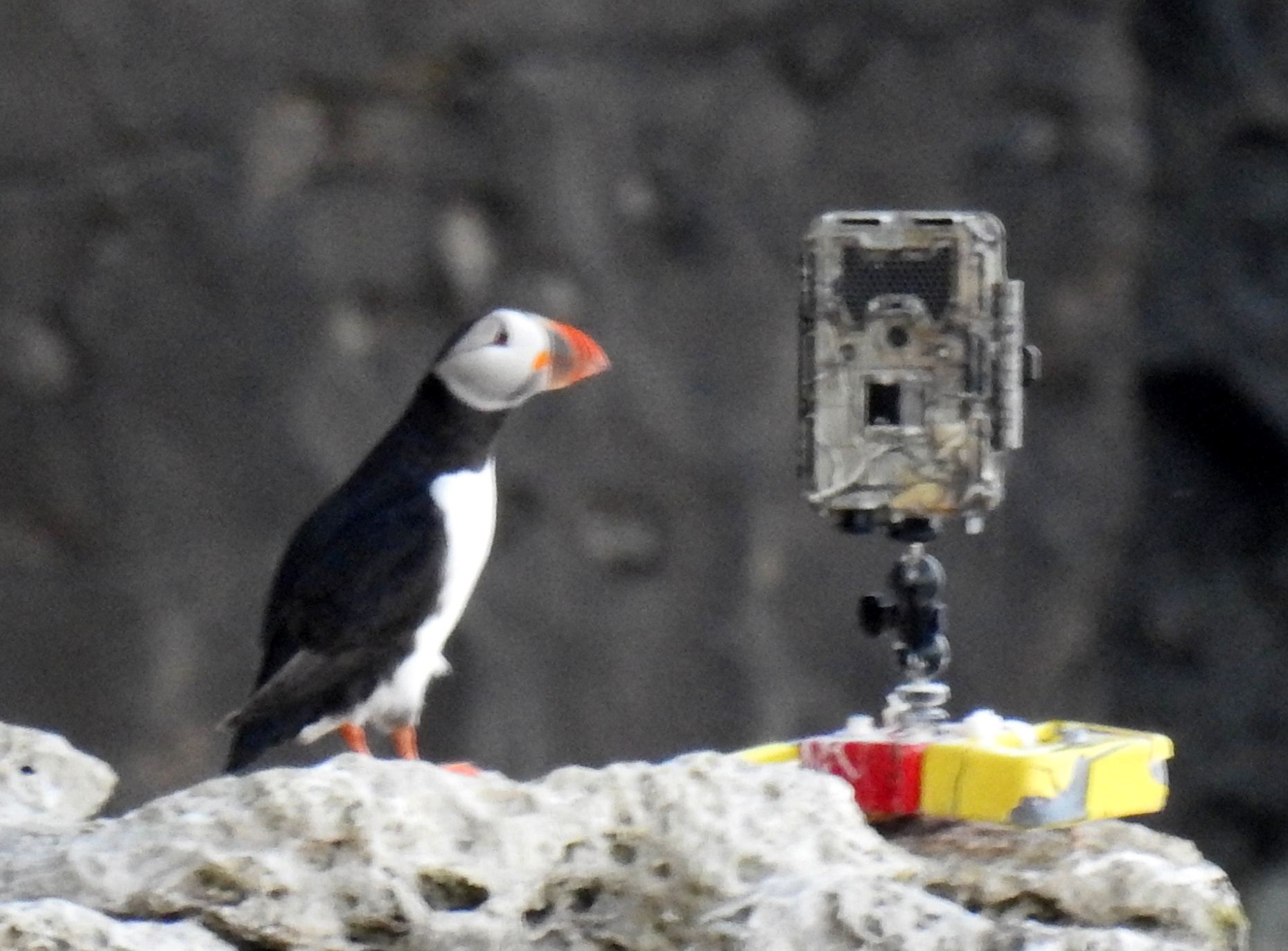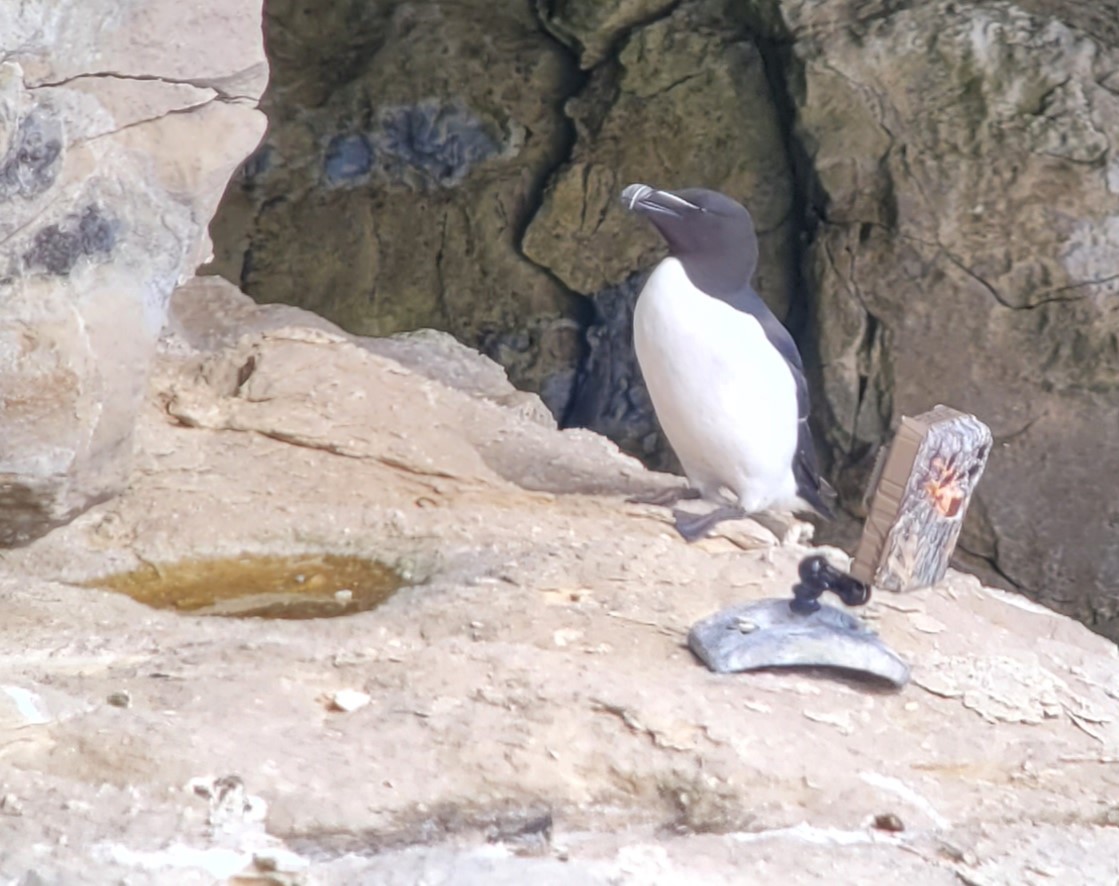EXPERTS have been trying to get to the bottom of why the puffin colony in Purbeck has been in decline in recent years.
Remote motion-sensor cameras were installed at a perilous cliff near Dancing Ledge – one of Purbeck’s most famous landmarks – at the start of the breeding season in 2024 to help establish the reasons as to why pufflings are not surviving to fledge.
Predation of eggs and chicks by rats or crows was thought to be the most likely cause, but despite capturing 70,000 images, no evidence of predators or indications of why no chicks are fledging were found.
Marine ornithologist Dr Richard Caldow has led these investigations.
His monitoring of the site, along with a team of volunteers, showed that in 2023 the puffins were carrying fish to their nests for three weeks but then stopped abruptly.
Sadly, this suggests that the pufflings had died suddenly.
READ MORE: Fallen walker rescued by air ambulance after suffering head injury at Dancing Ledge
READ MORE: Beavers return to the wild in Studland after 400 years in historic reintroduction
READ MORE: Rare Studland bats get extra protection to keep roosting sites safe
The birds began nest-building again in 2024, but they weren’t seen to deliver any fish – with the most logical reason being because their eggs didn’t hatch.
Richard said: “It’s disappointing that the cameras didn’t reveal exactly what the problem is – because if they had, we could potentially take action to increase the puffins’ chances of rearing chicks.
“This is important because it’s the last known regular nesting site for puffins on the mainland of southern England.
“Puffins were once abundant on this coastline – with some 85 birds recorded in Purbeck in 1958.
“In recent years, only three nesting pairs of puffins have been seen here, along with a few adolescent birds.

Puffin with a motion sensor camera Picture: Pete Christie
“For many years no fledglings have been spotted.
“Sadly, this severe decline means that without intervention, they are probably facing extinction here.”
Puffins are one of the rarest breeding birds in Dorset, and there are fears that they could become extinct in Dorset by 2040.
The National Trust is now asking for help from boat operators in Purbeck to help gather more data about exactly where the puffins are nesting to inform future remote monitoring.
Plans are in place to reinstate the cameras next year, but with better equipment located exactly where each pair nests.
These locations will be mapped following land-based monitoring by volunteers, as well as footage gathered by boat operators – as the best views of the ledge are from the sea.
Ben Cooke, rivers and coast project officer for the National Trust said: “Despite not giving a definitive answer, the cameras did give us useful information about what we need when we repeat the exercise, hopefully in 2026.
“Next time we can further refine the placement and quality of the camera equipment, optimising our chances of recording the puffins’ behaviour and the presence of any predators.
“It’s crucial to gather as much evidence as possible about what’s happening with the puffin colony, then we can assess if there is anything we can do to help.
“Along with our partner organisations, we’re committed to doing whatever we can to prevent the loss of this iconic, much-loved species.”
Despite the cameras failing to pick up any predators, they provided a fascinating insight into the hidden world of puffins – and how they interact with other sea birds.

Razorbill and camera Picture: Richard Caldow
The number of photos showing one pair of puffins carrying nesting material in mid-April indicated that they laid an egg around that time, but it’s not known whether it hatched.
The male and female puffins took turns to incubate the egg, with each shift being 10 to 20 hours but, unlike the razorbills, they never appeared together on camera.
Puffins and razorbills were nesting very close together. The puffins seemed to avoid getting close to the much-bigger razorbills, which often threatened them when they did.
The puffins often appeared at the ledge as soon as the razorbills left, so razorbills may be influencing the puffins’ nesting activity.
Puffins are sometimes active at their nest site in total darkness, between 1am and 4am, but are most active between 5am and 8am.
The project has been a collaboration between Dr Richard Caldow, the National Trust and Dorset Wildlife Trust.
Volunteers from the Purbeck Natural History Forum have played a vital role, not just in processing the images, but also doing land-based monitoring on a rota to record all puffin activity.
Dancing Ledge is a highly popular spot on the south Purbeck coastline, used by walkers, climbers and other activity groups.
Because of the inaccessible location of the puffin nests, the easiest way to spot them is from the sea – there are guided boat trips run in the summer by Durlston Country Park and Birds of Poole Harbour.











Could the puffins be observed, filmed from light manual aircraft such as microlights. Maybe a local club or individual might be interested to help? Only an idea..